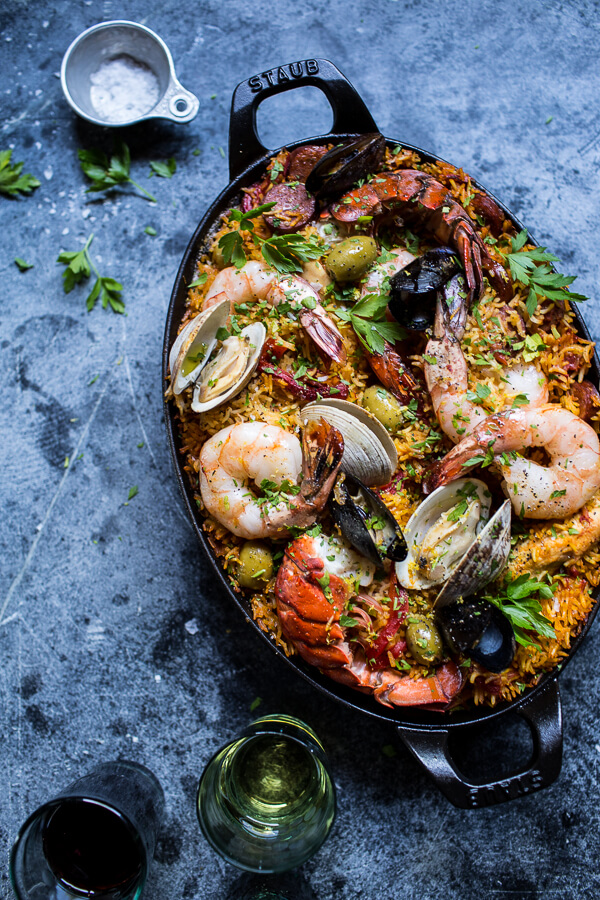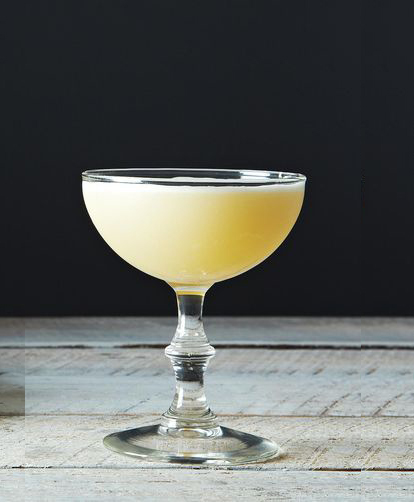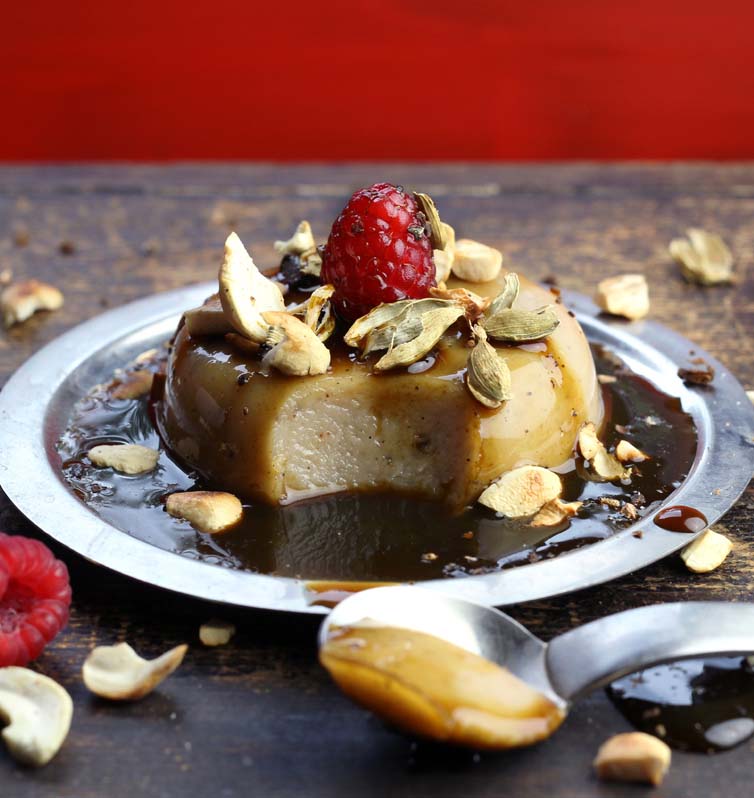
PORTUGUESE SEAFOOD PAELLA
Ingredients [Serves 04-06]
Tbs. Olive Oil
6 Chicken drumsticks skin on
Plain flour
6 rashers of pancetta or smoked streaky bacon
250 g chorizo or other spicy smoked sausages, cut into slices
250 g squid or calamari
1 yellow onion, chopped
200 g bell pepper, seeded and chopped
4 garlic cloves, minced
400 g crushed tomatoes
Kosher salt and freshly ground pepper
2 cups (440 g) Bomba, Arborio or paella rice
2 large pinches of saffron
2 teaspoon smoked paprika
4 cups (1 l) chicken stock
500 g tiger prawns 500 g mussels, scrubbed and de-bearded
1 cup (155 g) green peas
½ bunch flat-leaf parsley
1 large lemon or limes
Method
Preheat the oven to 190ºC.
Season the chicken drumsticks with salt and black pepper and dust with flour.
Heat a splash of oil in a large, deep pan on a medium heat and fry the chicken until golden brown all over, then transfer to a baking tray and place in the oven for 20 minutes, or until cooked through.
In large paella pan over medium-high heat the olive oil. Add the sausage and pancetta or bacon and fry, turning occasionally, until browned on both sides, about 3 minutes. Add the squid or calamari and fry. Add the onion, bell pepper tomato and garlic and cook, stirring occasionally, until softened, 3 to 4 minutes. Seasoning with salt and pepper.
Heat the stock and infuse half of the saffron. To the paella pan add the smoked paprika, balance saffron and the rice stirring until the grains are well coated, about 2 minutes and then add most of the infused stock to the pan with 1 ½ tsp. salt. Bring to a boil, then reduce the heat to low, cover and cook until the rice has absorbed nearly all of the liquid, about 20 minutes.
When the rice has absorbed nearly all of the liquid, press the mussels, hinge side down, into the rice. Spread the prawns over the rice and top with the peas and balance stock. Cover and cook about 5 minutes. Finally, add the cooked chicken, sprinkle over the chopped parsley and serve with wedges of lemon or lime


